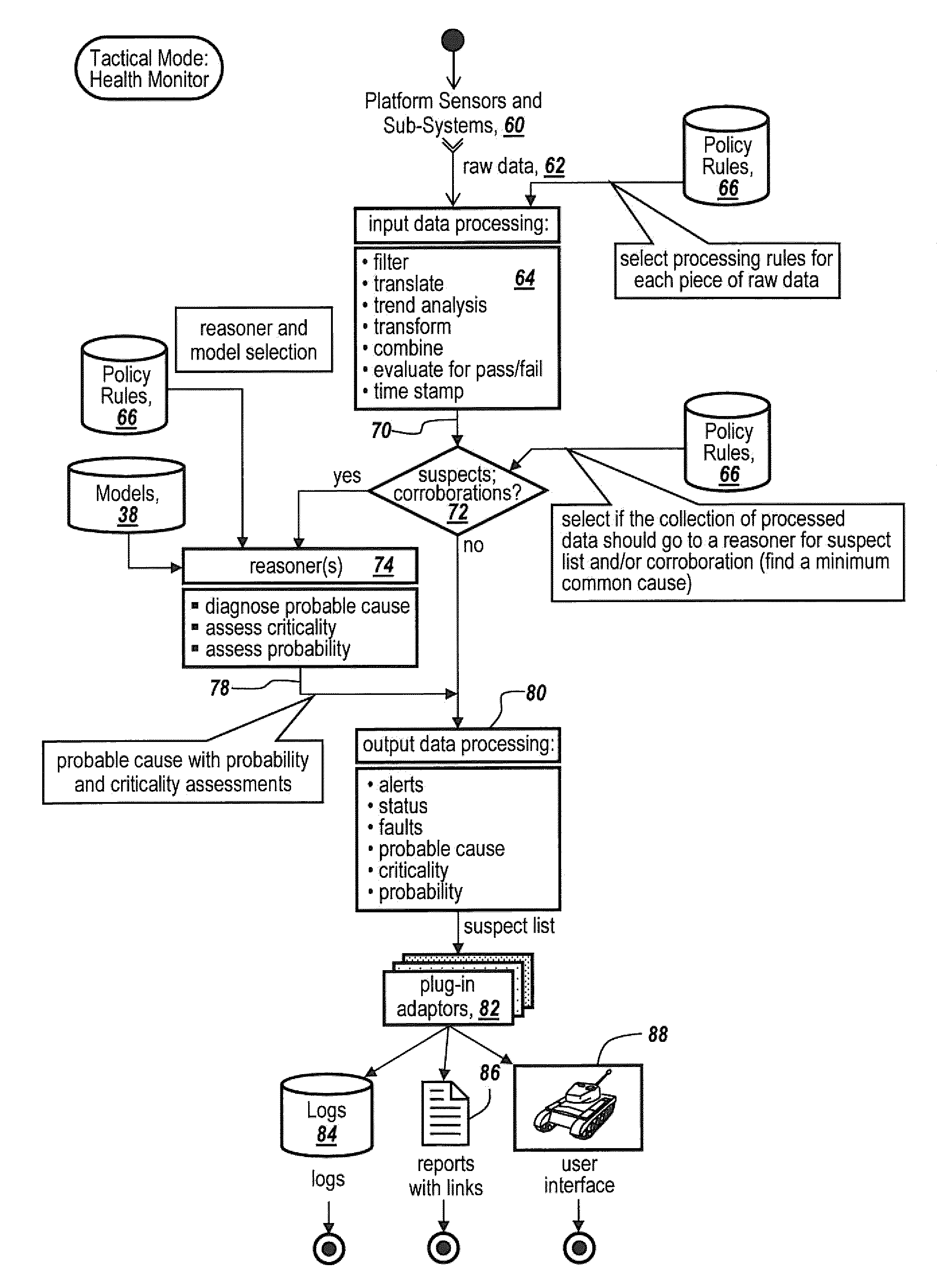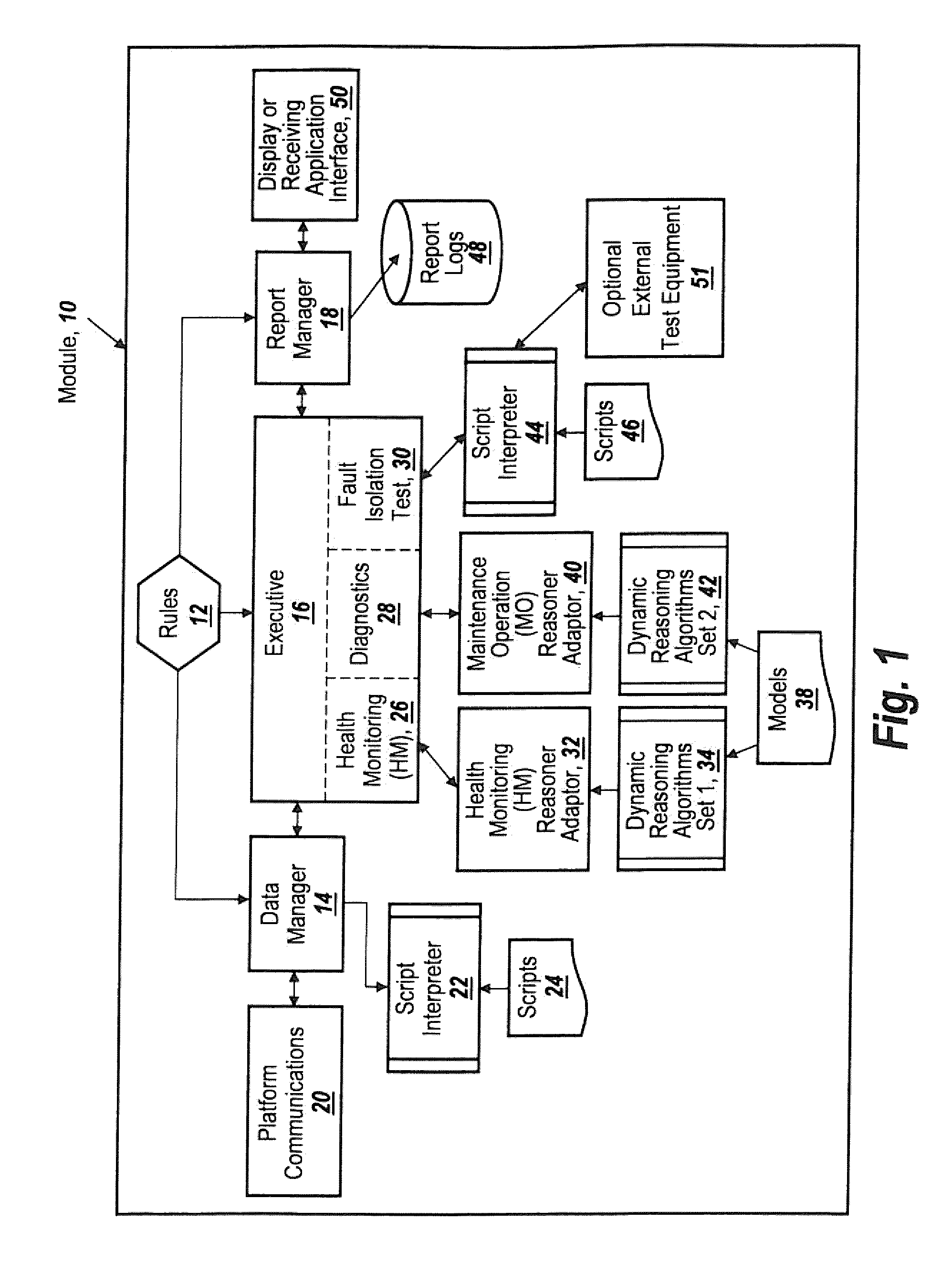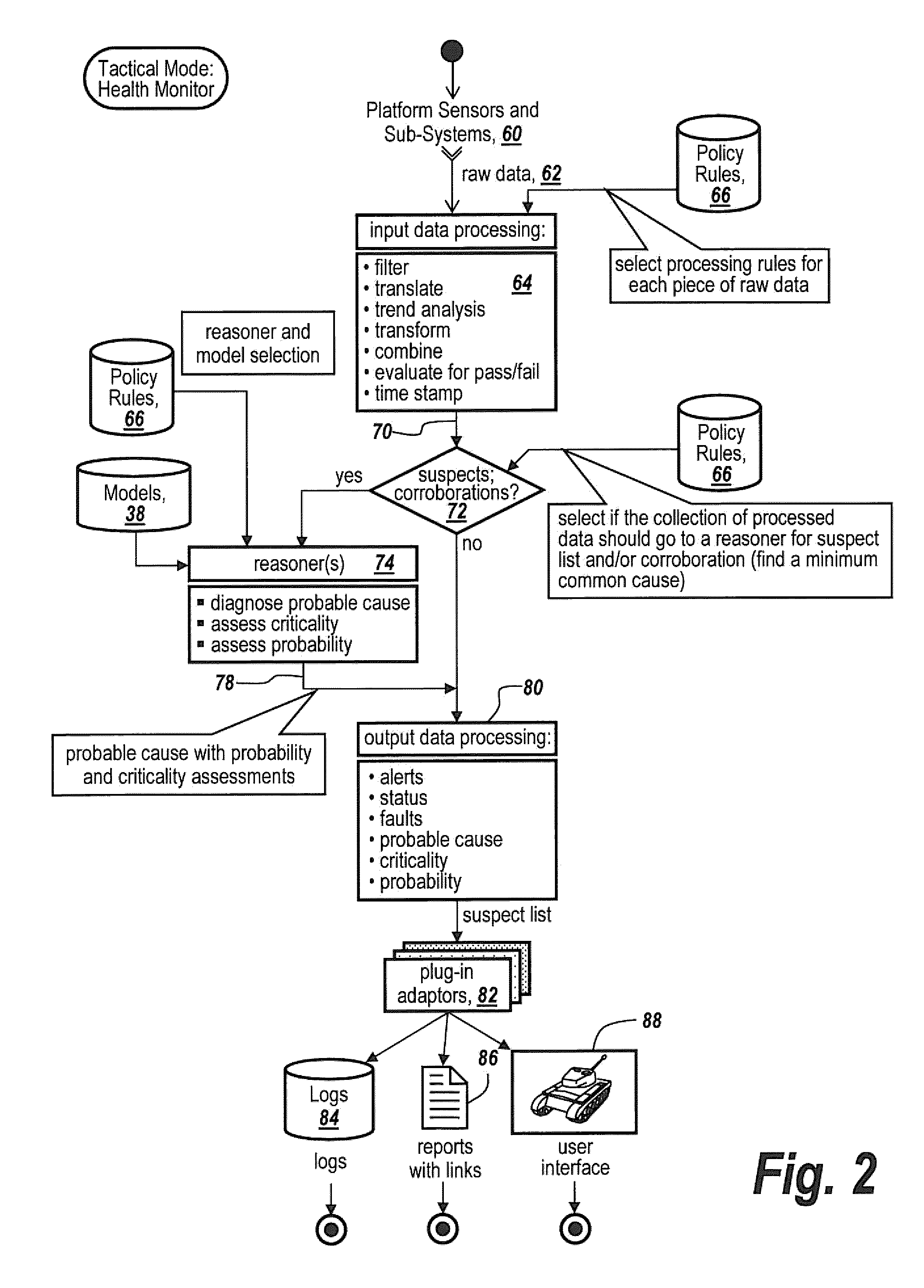Prognostic diagnostic capability tracking system
a technology of diagnostic capability and tracking system, which is applied in the direction of error detection/correction, testing/monitoring control system, instruments, etc., can solve the problems of mechanics or maintenance personnel at a loss to determine solely from the indicator, the engine light illumination is not immediately apparent, and the mechanic or maintenance personnel are at a loss to determine which one item needs to be repaired or replaced, etc., to reduce the time it takes, reduce unnecessary ordering and replacement of parts, and eliminate the effect of transpor
- Summary
- Abstract
- Description
- Claims
- Application Information
AI Technical Summary
Benefits of technology
Problems solved by technology
Method used
Image
Examples
Embodiment Construction
[0050]Referring now to FIG. 1, a module 10 is either embedded or connected to a platform or LRU which performs a prognostic and diagnostic function to detect faults and to analyze and diagnose the causes of the faults of the platform to which it is coupled.
[0051]In order for the module to adapt to any of a wide variety of applications, module 10 is provided with a rules engine 12 which is coupled to a data manager 14, an executive program 16 and a report manager 18.
[0052]The rules are modified or adapted for each of the platforms or LRUs the module is to monitor, with platform communications 20 connecting module 10 to the particular platform involved.
[0053]Data manager 14 is coupled to a script interpreter 22 which is provided with scripts 24, thus to be able to translate the platform communications format to a universal format usable by module 10 as well as to perform translation, and transformation of the input data.
[0054]Executive program 16 controls three functions, namely a hea...
PUM
 Login to View More
Login to View More Abstract
Description
Claims
Application Information
 Login to View More
Login to View More - R&D
- Intellectual Property
- Life Sciences
- Materials
- Tech Scout
- Unparalleled Data Quality
- Higher Quality Content
- 60% Fewer Hallucinations
Browse by: Latest US Patents, China's latest patents, Technical Efficacy Thesaurus, Application Domain, Technology Topic, Popular Technical Reports.
© 2025 PatSnap. All rights reserved.Legal|Privacy policy|Modern Slavery Act Transparency Statement|Sitemap|About US| Contact US: help@patsnap.com



